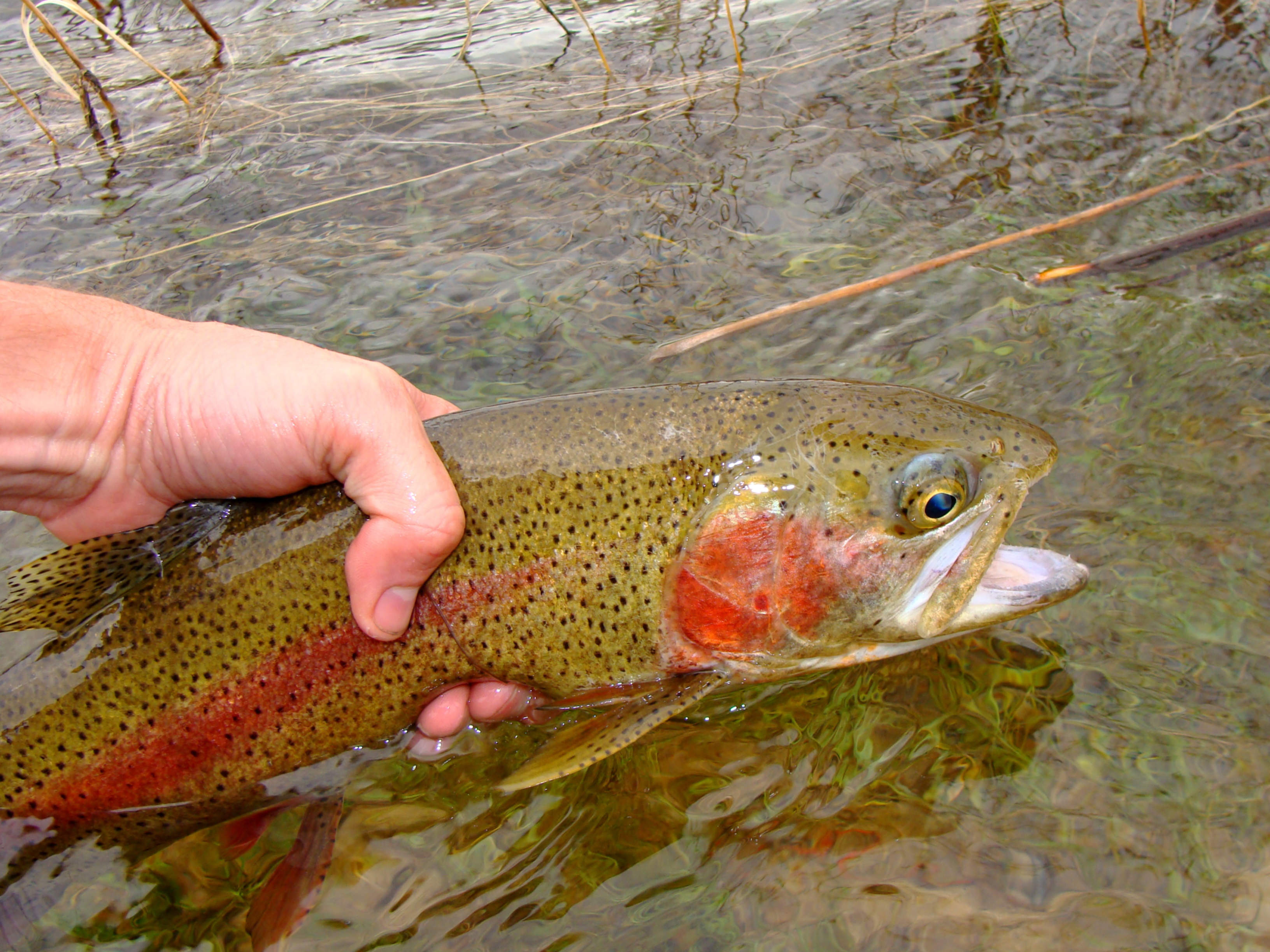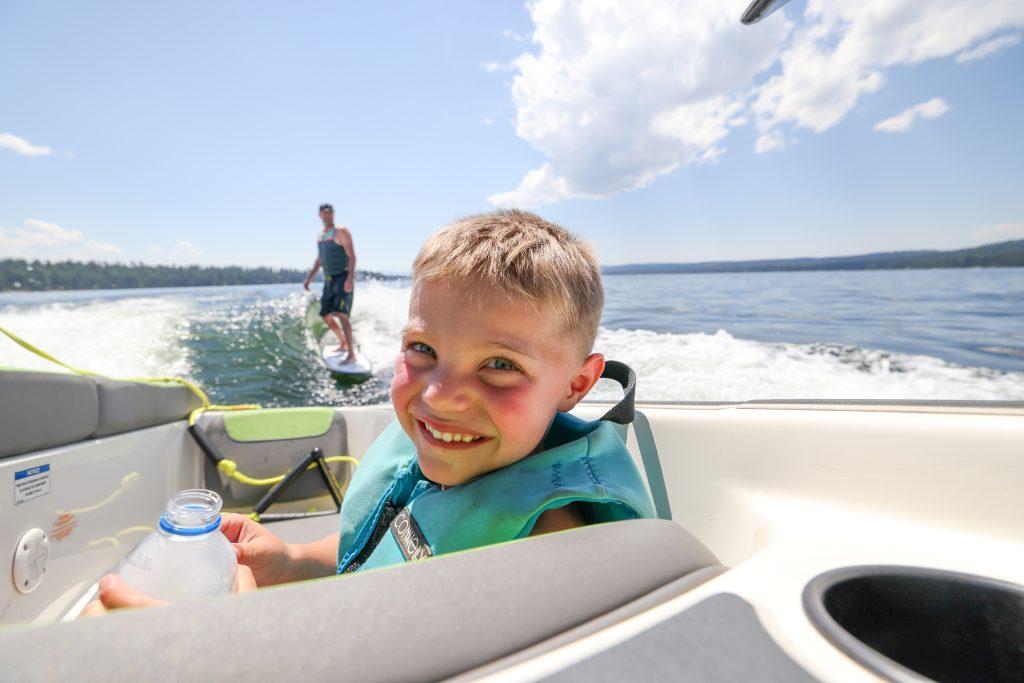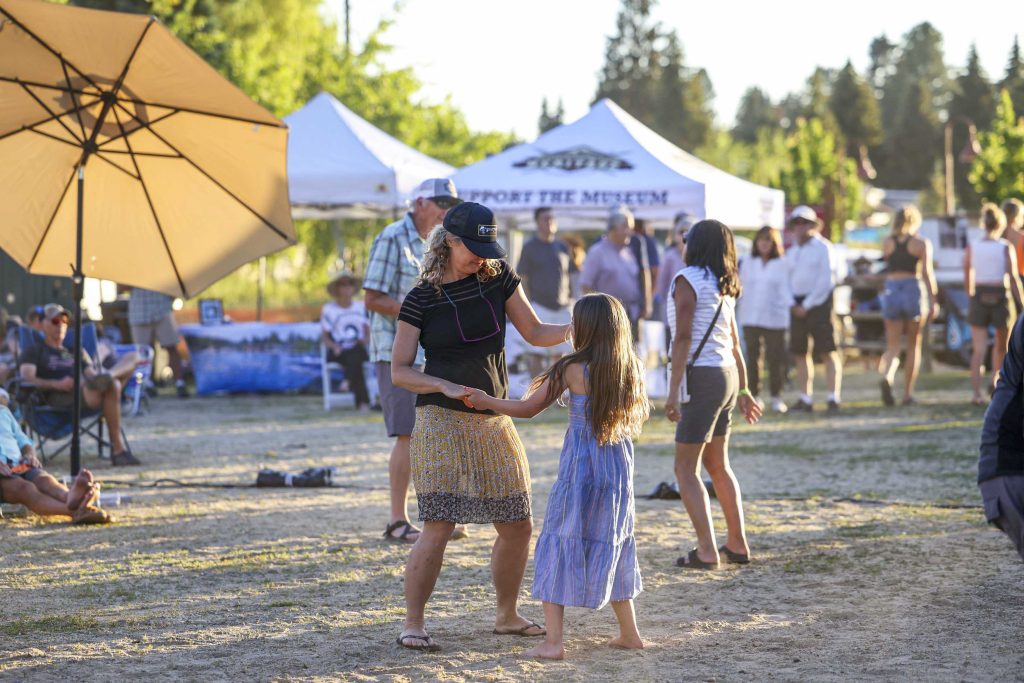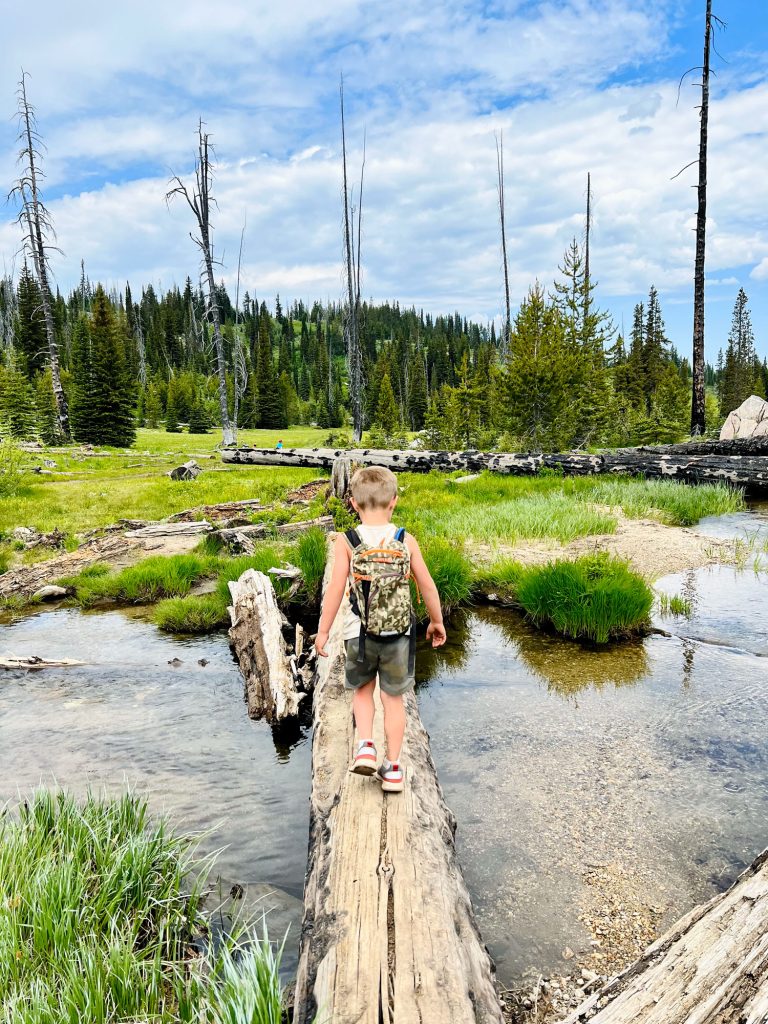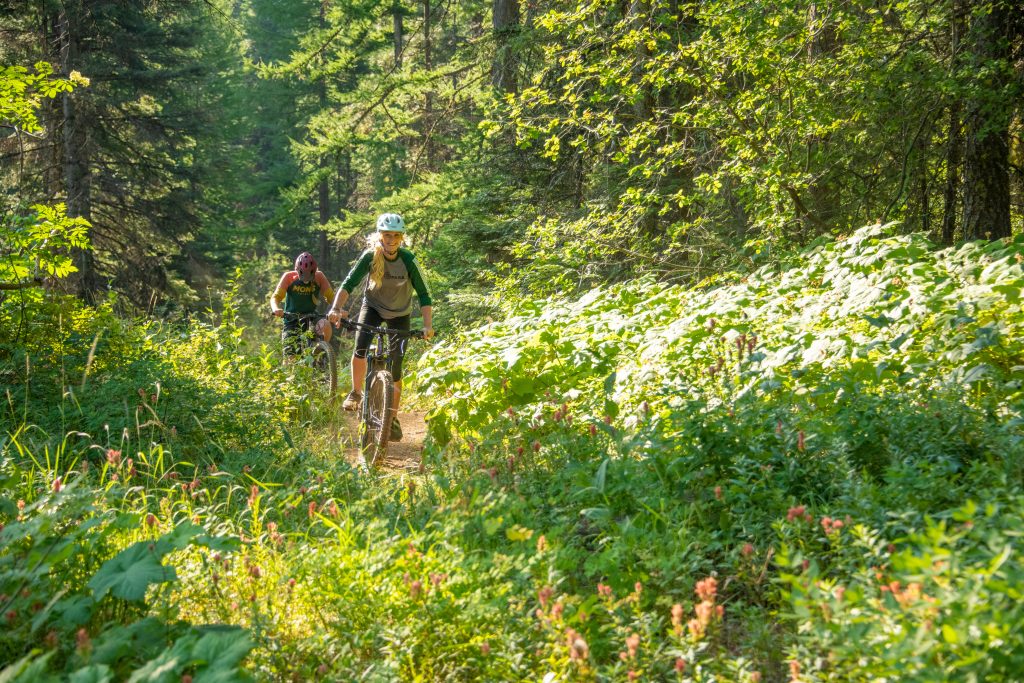Your quick-start guide to fishing in McCall, Idaho
Crystal clear streams. Stunning alpine lakes. Family friendly ponds. So many options, so little time! Fishing is a fabulous way to experience the great outdoors and there is very little to compare to the thrill of reeling in a catch! Whether you are an expert or just starting out, a fly or bait fisherman, McCall has a wide variety of options to fit any style. Here are 10 of our favorite fishing spots to try in McCall.
- Lost Valley Reservoir
An all-around recreational area offering camping, boating, hiking and (of course) fishing. Find brook trout and 10 to 16 inch rainbow trout in these waters. To access Lost Valley Reservoir, take Highway 95 west of New Meadows and turn at Pine Ridge (about 10 miles southwest). The road to the Reservoir provides a scenic loop around the lake with many easy pull-outs to stop and drop a line.
- Goose Lake
Perfect for those looking to cast from a float tube! Goose Lake is a no-wake lake 16 miles north of McCall up Goose Lake Road where you can fish for brook trout, cutthroat trout and rainbow trout. Make Grouse Campground at Goose Lake your home base and explore the network of alpine lakes if you are looking to extend your fishing trip!
- Hazard Lakes
There are two main lakes that comprise Hazard Lakes in the Grassy Mountain Range that are ideal for a quiet, remote fishing setting. Big Hazard Lake is a 300 yard walk from the campground and Upper Hazard Lake is a 2-mile hike. Both lakes offer brook trout. Hazard Lakes are located up Goose Lake Road. Be prepared to travel along a narrow gravel road to access these lakes.
- Granite Lake
This small, scenic lake north of Brundage Mountain is stocked with rainbow trout. Grab your fishing tube, kayak or canoe and enjoy these smooth waters. To access Granite Lake, drive past Brundage Reservoir to the fork at Sader Meadows. Take road 446 3 miles. Four-wheel drive is highly recommended!
- North Fork of the Payette River
We love to talk about this beautiful stretch of river as a perfect kayak or SUP spot, but it also a fisherman’s haven. Find rainbow trout, brook trout, mountain whitefish, and cutthroat trout. Runs of Kokanee can be seen in the fall, but remember, Kokanee on this stretch of river are catch-and-release only!
- Payette Lake Complex
Comprised of three lakes including Payette Lake, Little Payette Lake and Upper Payette Lake. Payette Lake (5337 acres) is great fishing for cutthroat and rainbow trout. In addition, Fish and Game reports that old-growth lake trout planted in the 1950s can weigh more than 30 pounds. Little Payette Lake (1450 acres) has a good population of trophy small mouth bass. There is a 2-fish limit on bass and fish must be at least 20” long. No live bait may be used on this lake. Upper Payette Lake (400 acres) is stocked with rainbow trout. Brook trout can also be found in these waters.
- Louie Lake
Looking to bring home a fish tale? Louie lake is where you can find trophy cutthroat trout that will make you the envy of your friends. A short, but uphill hike will take you to this pristine lake accessed from the same parking lot as the Boulder Lake trailhead. Pack in your float tube or fish from the bank – either way, we guarantee the effort is worth it!
- Gold Fork Creek
The ultimate relaxation destination! Spend the morning fishing for rainbow trout, brook trout, kokanee and bull trout (bull trout are catch-and-release only). In the afternoon, head to Gold Fork Hot Springs for a soak. Two amazing ways to relax all in one place! To access, drive south of Donnelly then turn at the Gold Fork Hot Springs sign. Just remember to respect private landowners and only access the creek on public lands.
- Fischer Pond
A great option for those looking to fish without rugged access terrain. Designated as family fishing waters, you can find rainbow and cutthroat trout at Fischer Pond. Developed as a cornerstone of the city park in Cascade, this 1.7 acre pond is a perfect place to drop a line in summer and fall.
- Cascade Lake
The largest fishing lake on our list, Cascade Lake boasts 28,300 acres of prime fishing for perch, rainbow trout, kokanee, Coho salmon, smallmouth bass, channel catfish, crappie, and tiger muskie. Find a prime spot along 50 miles of clean, sandy shores or take your boat out to explore. Stop at Tackle Tom’s in Cascade to get the inside scoop on what’s biting!
Know Before You Go :: Fish Identification
For a complete guide on fish identification, seasons and daily limits, please visit the Idaho Fish and Game Rules & Regulations.
Bull Trout (Catch-and-Release ONLY)
Olive green with brown above and on sides, shading to white on belly. Lacks wormlike markings as in Brook Trout. Upper body with yellow spots, sides with red or orange spots. No bluish halos around spots and white borders on fins less distinct than in Brook Trout. Tail is slightly forked.
Brook Trout
Dark green or blue black on back, to white on belly. Belly and lower fins may turn brilliant red in spawning males. Upper body and dorsal fin with mottled or wormlike markings. Sides with pale spots and reddish spots which may have bluish rings around them. Lower fins, including tail. Have distinct white leading edge. Tail square, or only slightly forked.
Cutthroat Trout
Red to orange slashes on underside of lower jaw. Body color variable. Back steel gray to olive green. Sides may be yellow brown with red or pink along belly. Spotting more closely grouped toward tail. May spawn in wild with rainbow.
Rainbow Trout
Body color variable. May be silvery in lakes and reservoirs. Back olive to greenish blue, belly white to silvery. Sides may show red or pink streak, white tip on pelvic (belly) and anal fin usually evident. Irregular spots on back, sides, head, dorsal fin and tail. Spots are more evenly distributed from head to tail on rainbow trout than cutthroat trout.
Chinook Salmon
Adults 24-40 inches in length. Irregularly shaped black spots on back, dorsal fin and tail. Teeth well developed. Black mouth and gum line. Adults return to Snake, Salmon and Clearwater rivers to spawn after 1-3 years at sea. Juveniles migrate to ocean after 18 months in streams. Seasons and rules are set annually because the number of Chinook returning to Idaho can vary greatly from year to year.
Kokanee
Back greenish blue with faint speckling and few if any spots. Sides and belly silvery. No distinct spotting in dorsal fin or tails as in RAINBOW. During spawning (September-December in both streams and shoreline gravels), bodies become ‘leathery’ and turn dark red to bright scarlet and heads dusky green. Spots are visible on the back half of the fish when in spawning coloration. Kokanee are native to the Payette lakes and the Stanley Basin lakes and have been established in other large lakes and reservoirs throughout the state.
Steelhead
Adults generally 20-40 inches in length. Irregularly shaped black spots on back, dorsal fin and tail. Steelhead are ocean-run rainbow which spawn in Snake, Clearwater and Salmon drainages; juveniles migrate to the ocean, return as adults after 1-2 years.
Bass
Smallmouth: Dark olive to brown on back, sides bronze, belly white. Dark vertical bands on sides. Eyes reddish. Upper jaw, when closed, does not extend behind eye.
Largemouth: Dark green on back and sides, belly white. Dark, irregular horizontal band along sides. Upper jaw, when closed, extends behind the eye.

